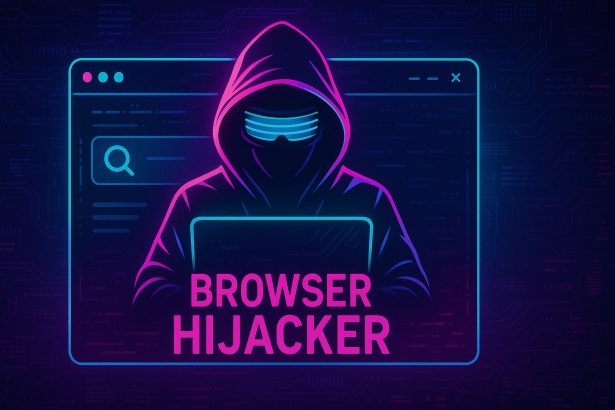A surge of complaints over unexpected pop-ups, forced redirects to Comsishago.com and excessive in-page advertisements has marked the rise of a new browser hijacker. In one recent case, a user opening a seemingly harmless freeware installer found every new tab hijacked—ads plastered across every website they visited.
Threat Overview
Comsishago.com Ads is classified as a browser hijacker/adware. This threat silently alters browser settings to inject adverts, track user activity, and profit off pay-per-click schemes. While not encrypting files or locking the system, its intrusive behavior can degrade performance, compromise privacy, and lead to more severe malware.
In-Depth Analysis
Infection Vector
- Bundled Installers: Often tucks into “optional offers” of freeware and shareware packages.
- Fake Updates/Alerts: Presents as an urgent browser or video-codec update requiring installation.
- Deceptive Ads: Clicking on misleading adverts or “you won’t believe this” pop-ups can trigger the download.
Behavioral Profile
- Startup Persistence: Adds registry entries or scheduled tasks to launch with Windows.
- Browser Modification: Alters homepage, new-tab URL, and default search engine to point at Comsishago.com.
- Ad Injection: Inserts banners, pop-ups, and in-text ads across all visited sites.
- Privacy Breach: Logs user search queries, visited URLs, and possibly keystrokes to a remote server.
- Additional Payloads: May download secondary adware or tracking cookies for expanded revenue streams.
Risk Assessment
- User Privacy: Continuous tracking can expose sensitive browsing habits.
- Performance Hit: Resource drain from constant ad loading leads to sluggish browsing.
- Malware Gateway: Redirects could lead to malicious exploit kits or drive-by downloads.
- Real-World Example: In early 2025, a corporate network experienced a slowdown epidemic traced back to a hijacker identical in behavior to Comsishago.com, affecting over 200 workstations.
Manual Removal Guide for Browser Hijackers
Step 1: Uninstall Suspicious Programs (Windows & Mac)
Before resetting your browser, remove any software that may have installed the hijacker.
Windows (10, 11, 8, 7)
- Press
Win + R, typeappwiz.cpl, and hit Enter. - Find Unwanted Applications
- Look for recently installed programs that seem suspicious (e.g., “EasySearch,” “QuickFind,” “Search Manager”).
- Uninstall
- Click on the suspicious program > Select Uninstall > Follow on-screen instructions.
Mac (macOS Ventura, Monterey, Big Sur, Catalina, Mojave, etc.)
- Open Finder and go to Applications.
- Look for unknown or unwanted programs.
- Drag any suspicious apps to the Trash and empty the Trash.
Step 2: Remove Browser Hijacker from Web Browsers
Google Chrome
- Reset Chrome to Default Settings
- Open Chrome > Click ⋮ Menu (top-right corner) > Settings.
- Scroll down and select Reset settings > Click Restore settings to original defaults > Confirm.
- Remove Suspicious Extensions
- Open chrome://extensions/ and remove unknown extensions.
- Change Default Search Engine & Homepage
- Go to Settings > Search engine > Select Google or another trusted search engine.
- Under On Startup, remove any unwanted URLs.
Mozilla Firefox
- Reset Firefox
- Click the Menu (☰) > Select Help > Click More Troubleshooting Information > Refresh Firefox.
- Remove Unknown Extensions
- Open Add-ons Manager (
Ctrl + Shift + A) > Remove any suspicious extensions.
- Open Add-ons Manager (
- Change Search Engine & Homepage
- Open Settings > Search > Choose Google or another safe search engine.
Microsoft Edge
- Reset Edge
- Click ⋮ Menu > Settings > Reset settings > Restore to default values.
- Remove Unwanted Extensions
- Open edge://extensions/ and remove any unfamiliar extensions.
Safari (Mac Only)
- Reset Safari & Clear Data
- Open Safari > Click Safari (top-left menu) > Select Clear History.
- Go to Preferences > Privacy > Click Manage Website Data > Remove All.
- Delete Suspicious Extensions
- Open Safari > Preferences > Extensions > Remove anything unfamiliar.
- Change Homepage & Search Engine
- Open Preferences > General > Change your homepage to a trusted site.
- In Search, set your search engine to Google or a preferred option.
Step 3: Check for Unauthorized System Changes
Windows – Check the Hosts File
- Open Notepad as Administrator (
Win + S, type Notepad, right-click, Run as Administrator). - Click File > Open and navigate to:makefileCopyEdit
C:\Windows\System32\drivers\etc\hosts - If you see unknown IPs or URLs at the bottom, remove them.
- Save changes and restart your computer.
Mac – Check the Hosts File
- Open Terminal (
Command + Space, typeTerminal). - Type:bashCopyEdit
sudo nano /etc/hosts - Look for suspicious entries and delete them.
- Press
Ctrl + X, thenY, thenEnterto save.
Automatic Removal Using SpyHunter (Windows & Mac)
For those who prefer a quick, hassle-free removal process, using SpyHunter is highly recommended.
Step 1: Download SpyHunter
Click here to download SpyHunter: Download SpyHunter
Step 2: Install & Run SpyHunter
- Follow the instructions on the SpyHunter Download Page to install the software.
- Open SpyHunter and run a full system scan.
Step 3: Remove Browser Hijackers
- SpyHunter will detect all malware and potentially unwanted programs.
- Click Fix Threats to remove the detected hijacker.
- Restart your device to complete the cleanup process.
Step 4: Reset Browser Settings (If Necessary)
Even after SpyHunter removes the hijacker, you may need to reset your browser settings manually (refer to browser-specific instructions above).
Preventing Future Browser Hijacker Infections
- Be cautious when installing free software – opt for Custom Installation to avoid bundled malware.
- Avoid clicking on suspicious ads or pop-ups – they often distribute browser hijackers.
- Keep your operating system and software updated – outdated programs are more vulnerable to infections.
- Use a trusted anti-malware tool like SpyHunter to provide real-time protection against threats.
Conclusion
Comsishago.com Ads may not lock files or demand payment, but its invasive ads, stealthy persistence, and privacy risks make removal essential. Early detection—spotting unwanted pop-ups or changed homepages—lets you reclaim full control of your browser before more dangerous malware slips in.




